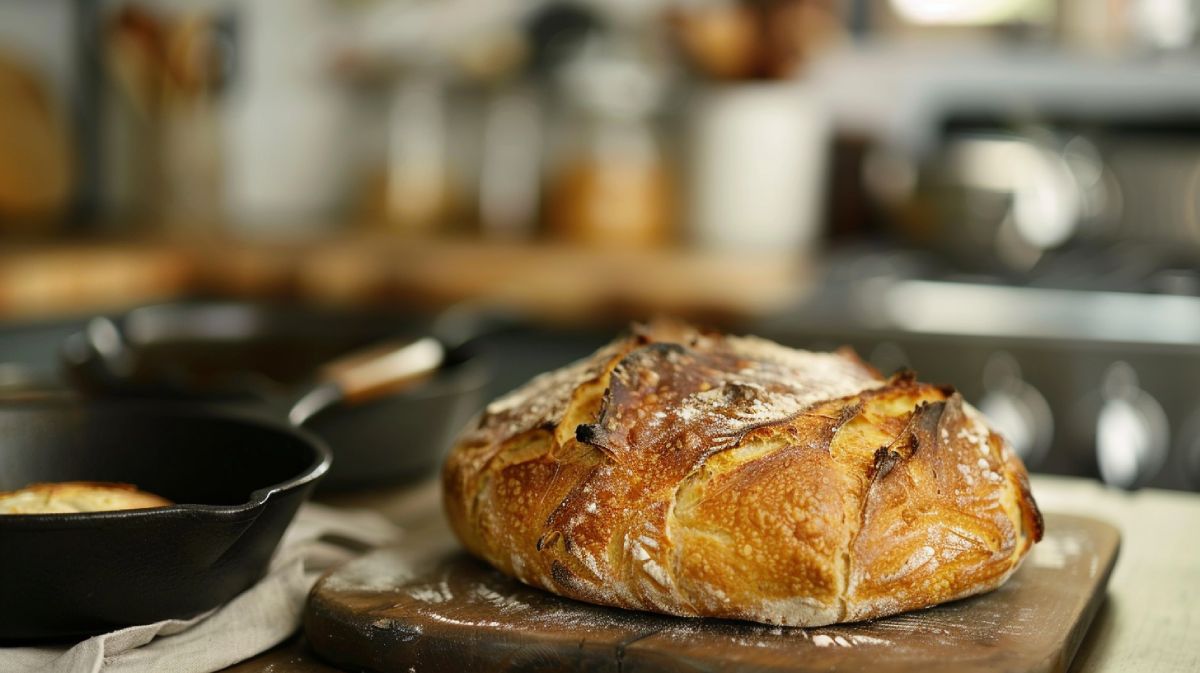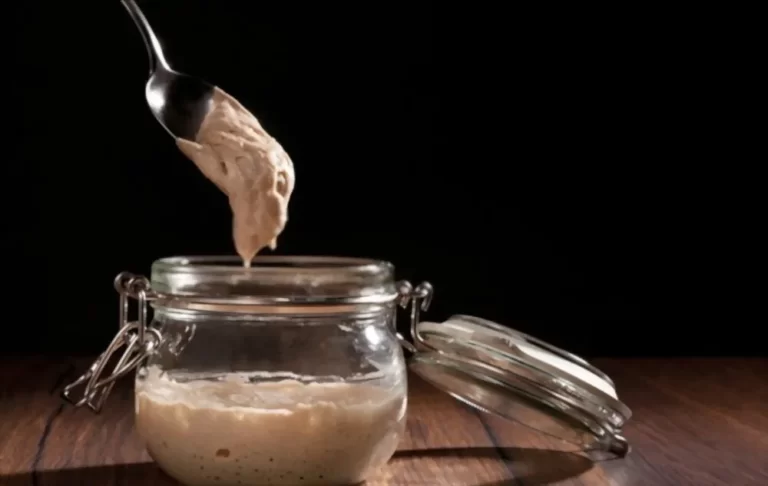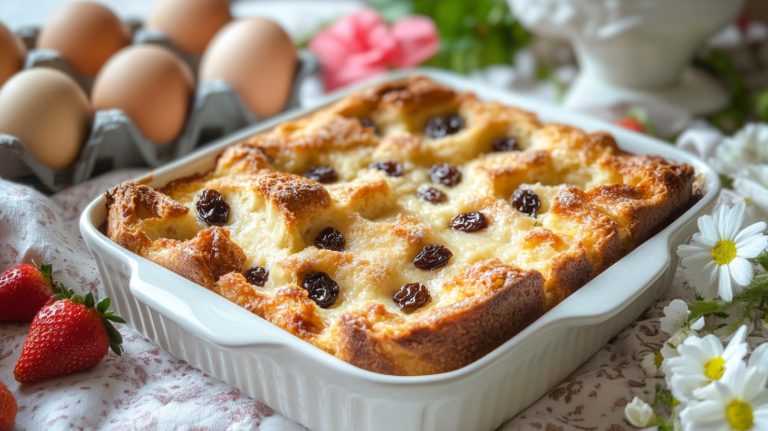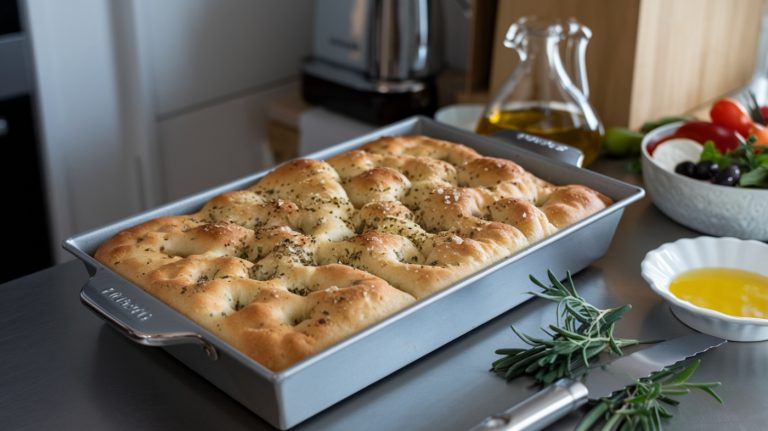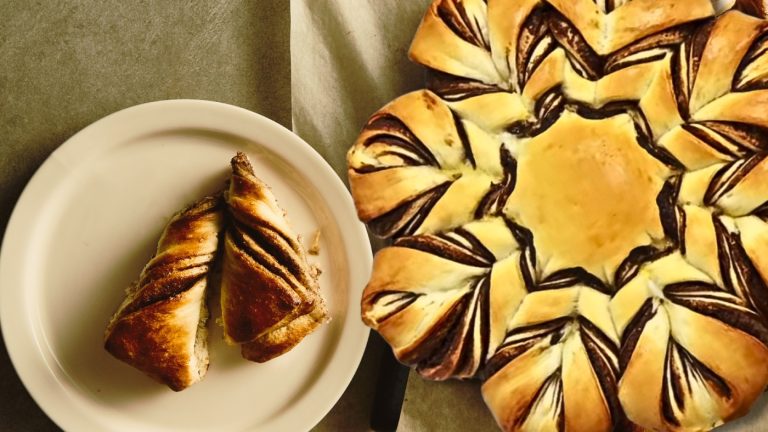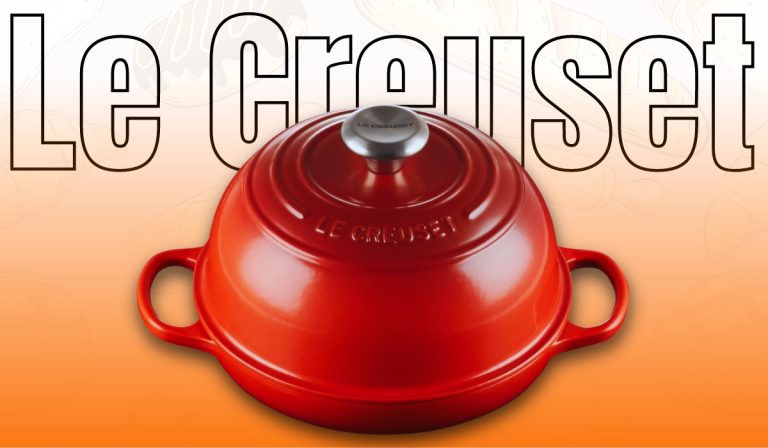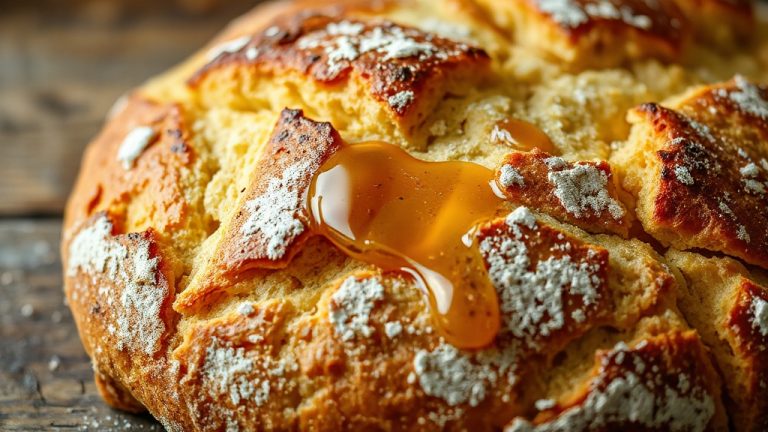Can You Bake Sourdough Without Parchment Paper?
You can absolutely bake sourdough without parchment paper. Instead, try using alternatives like dusting your baking surface with cornmeal or semolina. This not only keeps your bread from sticking but also adds a delightful flavor. A preheated Dutch oven guarantees a crispy crust, making your bread even more tempting.
If you want an easier transfer, consider a silicone bread sling or a well-floured surface. Many bakers share their successful experiences with these methods, showcasing innovative techniques that enhance your baking adventure. There’s plenty more to discover about perfecting your no-parchment baking skills!
Key Takeaways
- Yes, sourdough can be baked without parchment paper using alternatives like a preheated Dutch oven for better crust development.
- Dusting with cornmeal or semolina can prevent sticking and enhance the flavor of your sourdough.
- Using a silicone baking mat is a reusable, eco-friendly option that provides non-stick properties for baking.
- Cold-proofing allows the dough to rise directly in the Dutch oven, simplifying the transfer process.
Getting to Know Parchment Paper
Parchment paper is a versatile baking essential that helps prevent sticking and makes transferring your sourdough a breeze. This heat-resistant, non-stick baking paper is crafted from fibers like cotton, flax, or fir tree, often treated to enhance its non-stick qualities. When you’re baking bread, especially sourdough, you’ll appreciate how it allows for easy transfer from your baking surface to the cooling rack.
Parchment paper can withstand high temperatures, typically up to 400-440°F (204-227°C), making it perfect for most baking scenarios. However, be cautious as it may crisp and flake at even higher temperatures. One of the best features is its reusability; you can use it multiple times before needing to throw it away. Just keep in mind that it might become brown or brittle with repeated use.
Not only is parchment paper effective, but it’s also cost-effective. You can easily find affordable options at discount grocery stores, making it accessible for all bakers. So, if you’re aiming for that perfect loaf of sourdough, using parchment paper is a smart choice that enhances your baking experience.
Reasons for Alternatives
Many bakers are turning to alternatives for parchment paper due to rising costs and the growing desire for more sustainable, budget-friendly baking options. As environmental concerns increase, you might find yourself exploring reusable and compostable materials that align with sustainable practices.
Baking sourdough involves high temperatures that can cause parchment paper to burn or become brittle, leading you to seek more effective solutions. Additionally, some bakers face issues with parchment paper bunching up, which can deform the loaf shape and disrupt your baking techniques.
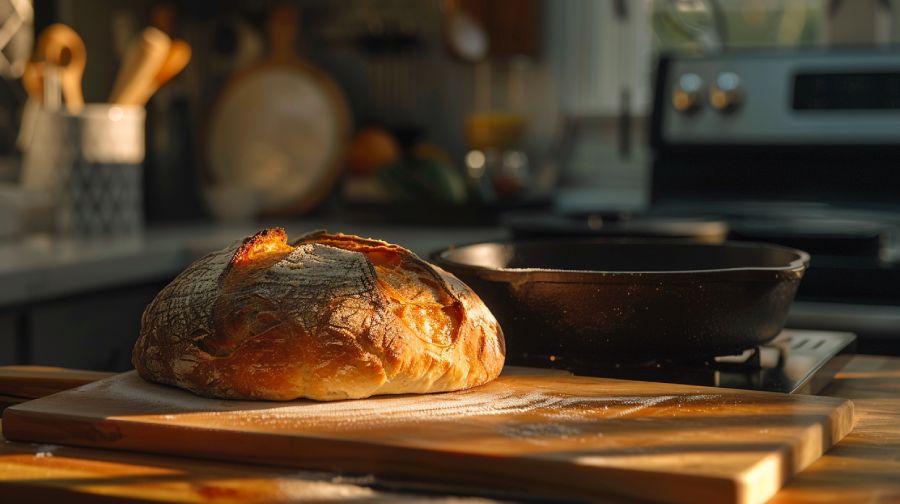
Here’s a quick comparison of some alternatives:
| Alternative | Benefits | Drawbacks |
|---|---|---|
| Silicone Baking Mat | Reusable, non-stick | Can be pricey upfront |
| Cast Iron Skillet | Excellent heat retention | Heavy and requires care |
| Greased Baking Dish | Budget-friendly, effective | May require precise cutting |
Exploring these alternatives not only helps you save money but also supports your commitment to sustainable practices. By finding the right solution, you can enhance your baking experience while being mindful of the environment.
Effective Baking Alternatives
Exploring effective baking alternatives can elevate your sourdough experience while eliminating the need for parchment paper. One of the best options is using a Dutch Oven. Simply sprinkle cornmeal or semolina inside to prevent sticking while adding a delightful flavor. This method guarantees excellent moisture retention and even heat distribution, creating a crusty loaf.
Another fantastic alternative is a baking cloche or a cast iron casserole dish. Both deliver similar results, trapping steam to give your bread that coveted texture. For an efficient transfer method, you can use a baker’s peel with a floured surface, making it easy to slide your dough directly into the oven without fuss.
If you’re looking for something reusable, consider silicone baking mats. They boast non-stick properties that work well for various baking tasks, making cleanup a breeze. These mats are eco-friendly and can serve as a versatile replacement for parchment paper.
Limitations of Common Substitutes
While alternatives to parchment paper can be handy, they each come with their own set of limitations that can affect your sourdough baking experience.
For instance, aluminum foil lacks the non-stick properties needed to prevent your loaf from sticking, leading to potential bread disasters. Greasing your Dutch oven with oil or butter might seem like a solution, but it often results in messy cleanups and more bread loss due to sticking.
Cornmeal or semolina can help reduce sticking, but relying on these alone may cause uneven baking or crust issues. Reusable parchment sheets are an eco-friendly option, yet they can burn or smoke at high temperatures, compromising your bake.
If you decide to bake directly on metal trays or surfaces, keep in mind that without proper preheating and flour dusting, you could end up with a dense or poorly shaped loaf.
Each substitute has its pros and cons, so you’ll want to reflect on these limitations carefully. Being aware of these factors will help you make informed decisions as you navigate your sourdough baking adventures without parchment paper.
Techniques for Baking Without Parchment
Baking sourdough without parchment paper opens up a variety of innovative techniques that can enhance your bread-making experience. You can achieve a beautiful crust and fantastic oven spring by directly dropping your shaped dough into a preheated Dutch oven or cast iron casserole dish. Here are some effective methods to take into account:
| Technique | Description | Benefits |
|---|---|---|
| Dusting with Cornmeal | Coat the baking surface with cornmeal or semolina flour. | Prevents sticking, adds flavor. |
| Silicone Bread Sling | Use a silicone sling or a homemade aluminum foil sling. | Easy transfer to the Dutch oven. |
| Cold-Proofing | Let the dough rise in the Dutch oven itself. | Seamless baking process. |
| Preheating the Dutch Oven | Preheat the Dutch oven before adding the dough. | Creates steam for crust development. |
Successful No-Parchment Techniques
Many bakers have discovered effective techniques for successfully baking sourdough without parchment paper, sharing their experiences and insights within the community. Using a well-floured surface or cornmeal can greatly help in preventing sticking when you bake sourdough. Many bakers have found that placing the shaped dough directly into a preheated Dutch oven results in a beautifully crisp crust and even baking.
Here’s a quick overview of popular no-parchment techniques:
| Technique | Benefits | Tips |
|---|---|---|
| Cold-Proofing | Simplifies transfer process | Place dough directly in the Dutch oven |
| Silicone Baking Mats | Reusable, non-stick properties | Great for multiple uses |
| Baking Stones | Excellent heat retention | Ideal for crust development |
Engaging in baker forums, you’ll discover that cold-proofing in the Dutch oven or using silicone baking mats can elevate your sourdough experience. Whether you choose to use baking stones or cast iron casserole dishes, these no-parchment techniques can transform your baking routine while producing delicious results.
Alternative Baking Methods Shared
Home bakers are continuously sharing their innovative methods for crafting sourdough without parchment paper, revealing a treasure trove of tips and tricks that enhance the baking experience. You’ll find that many bakers are exploring various alternatives to make the process smoother and the results tastier.
Here are some popular methods:
- Cornmeal or semolina dusting: Sprinkle this in your Dutch oven to create a crispy crust without sticking.
- Silicone baking mats: These provide a non-stick surface and are reusable, easing environmental concerns.
- Greased baking sheets: A well-greased or floured baking sheet can work wonders if you handle the dough with care during the transfer process.
- Cold-proofing in the Dutch oven: This technique allows you to skip parchment altogether, simplifying the process.
These alternative methods not only make it easier to bake sourdough but also foster a sense of creativity and community among bakers.
Immerse yourself in these ideas and see which one enhances your sourdough journey!
Tips for Easy Transfers
Exploring alternative baking methods opens up a world of possibilities for making easy transfers when handling sourdough, allowing you to focus on achieving that perfect loaf without the hassle of parchment paper. Here are some effective strategies to simplify your dough transfer:
| Method | Description | Benefits |
|---|---|---|
| Floured Baker’s Peel | Use a well-floured peel to slide the loaf into the Dutch oven. | Prevents sticking, easy handling. |
| Inverting Proofing Basket | Gently shake the proofing basket over the Dutch oven for a quick release. | Minimal fuss, no parchment needed. |
| Cornmeal on Baking Surface | Sprinkle cornmeal to create a non-stick surface. | Prevents dough from sticking. |
| Silicone Bread Sling | Utilize this tool for a secure grip during transfer. | Reduces mess and enhances control. |
| Spatula or Scraper | Use it to maneuver the dough from the work surface to the baking vessel. | Guarantees a smooth transfer. |
Frequently Asked Questions
What Can I Use Instead of Parchment Paper for Sourdough Bread?
You can use a silicone bread sling, sprinkle cornmeal or semolina in the Dutch oven, or utilize a baker’s peel for easy transfer. A baker’s cloche or reusable silicone mat also works perfectly for baking sourdough.
Can You Bake Bread in a Dutch Oven Without Parchment?
You can definitely bake bread in a Dutch oven without parchment paper! Just make sure to preheat it, dust with cornmeal, and use a well-seasoned pot for easy removal and a perfect crust. Enjoy your baking!
What Happens if You Bake Without Parchment Paper?
If you bake without parchment paper, your bread might stick to the surface, risking a torn loaf. You’ll need to grease or dust well, but it can lead to a beautifully rustic crust.
Can I Use Tin Foil Instead of Parchment Paper for Bread?
You can use tin foil instead of parchment paper for bread, but it might stick and could impart a metallic taste. Greasing it lightly helps, though it’s not as reliable as parchment in baking.
Beyond Parchment Paper: Creative Alternatives for Baking Perfect Sourdough
So, while parchment paper can make baking easier than slicing through butter, you can absolutely bake sourdough without it!
With a bit of creativity and some effective alternatives, you’ll find that your bread can still rise to delicious heights.
Embrace the techniques and tips shared here, and don’t forget to tap into your community for even more insights.
Your next loaf could be the star of the show, parchment-free and utterly scrumptious.

